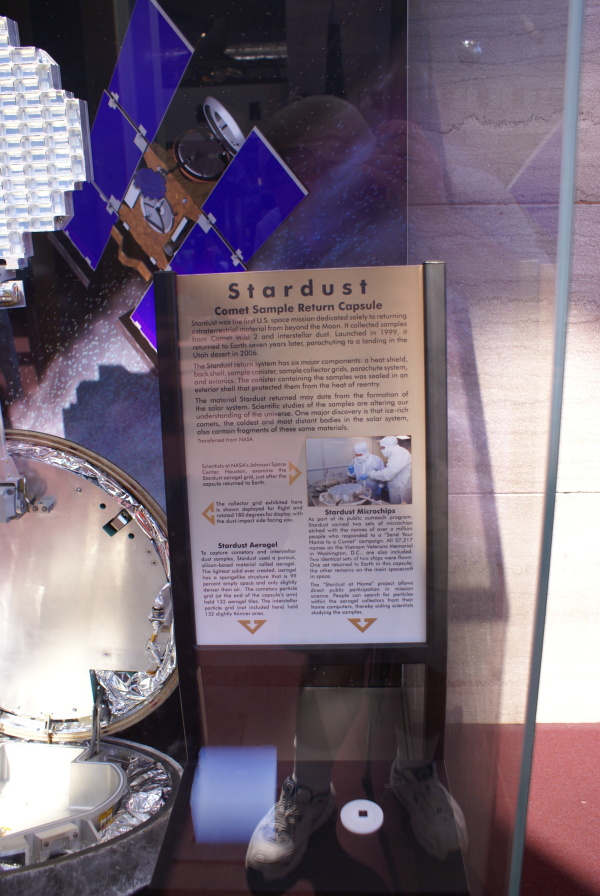| Prev |
heroicrelics.org National Air & Space Museum Site Index Stardust Sample Return Capsule Gallery |
Next |
dsc78310.jpg
The sign accompanying the Stardust sample return capsule. It reads
Stardust
Comet Sample Return CapsuleStardust was the first U.S. space mission dedicated solely to returning extraterrestrial material from beyond the Moon. It collected samples from Comet Wild 2 and interstellar dust. Launched in 1999, it returned to Earth seven years later, parachuting to a landing in the Utah desert in 2006.
The Stardust return system has six major components: a heat shield, back shell, sample canister, sample collector grids, parachute system, and avionics. The canister containing the samples was sealed in an exterior shell that protected them from the heat of reentry.
The material Stardust returned may date from the formation of the solar system. Scientific studies of the samples are altering our understanding of the universe. One major discovery is that ice-rich comets, the coldest and most distant bodies in the solar system, also contain fragments of these same materials.
Transferred from NASA The collector grid exhibited here is shown deployed for flight and rotated 180 degrees for display, with the dust-impact side facing you.
Stardust Aerogel To capture cometary and interstellar dust samples, Stardust used a porous, silicon-based material called aerogel. The lightest solid ever created, aerogel has a spongelike structure that is 99 percent empty space and only slightly denser than air. The cometary particle grid (at the end of the capsule's arm) held 132 aerogel tiles. The interstellar particle grid (not included here) held 132 slightly thinner ones.
Stardust Microchips As part of its public outreach program, Stardust carried two sets of microchips etched with the names of over a million people who responded to a "Send your Name to a Comet" campaign. All 57,217 names on the Vietnam Veterans Memorial in Washington, D.C., are also included. Two identical sets of two chips were flown. One set returned to Earth in this capsule; the other remains on the main spacecraft in space.
The "Stardust at Home" project allows direct public participation in mission science. People can search for particles within the aerojet collectors from their home computers, thereby aiding scientists studying the samples.

| Time picture taken | Sat Jun 25 09:21:42 2011 |
| Location picture taken | Milestones of Flight Gallery National Air & Space Museum Washington, DC |
| Prev | Stardust Sample Return Capsule Gallery | Next |